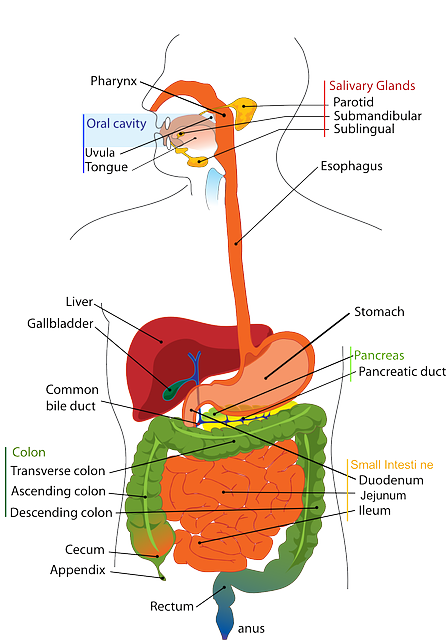This guest post on comparing Crohn’s disease and Ulcerative Colitis was contributed by pharmacist Jiamin Liau who is also a Certified Diabetes Educator in Australia. I’m appreciative for her contribution to help educate other healthcare professionals! If you’re a pharmacist and have a case or scenario you’ve seen in your practice feel free to shoot me a message.
Mr. XT complained of frequent diarrhea with frank blood in the stool. However, his pulse, temperature, hemoglobin concentration, and erythrocyte sedimentation rate were within the reference range. He was diagnosed with ulcerative colitis with scope results showing an inflamed rectum.
Is ulcerative colitis and Crohn’s disease the same? Or how are they different?
Ulcerative Colitis and Crohn’s disease are both inflammatory bowel diseases.
Ulcerative colitis:
√ limited to the colon
√ continuous inflammation of the colon
√ only affects the innermost lining of the colon
Crohn’s:
√ anywhere between the mouth and the anus.
√ there are healthy parts of the intestine mixed in between inflamed areas.
√ affects all the layers of the bowel walls
Further reading/source: https://www.uclahealth.org/gastro/ibd/ulcerative-colitis-vs-crohns-disease

After discussing with Mr. XT, the treatment plan is to commence him on budesonide therapy.
Budesonide, a corticosteroid, binds to glucocorticoid receptors with 195x greater affinity than hydrocortisone and offers rapid hepatic metabolism. This rapid metabolism allows for less systemic adverse effects (dose dependent of course). Budesonide is available in multiple formulations – oral tablets, rectal foam enema and enema for use in ulcerative colitis and Crohn’s disease.
Which one to choose and are they interchangeable? Different budesonide formulations work in different parts of the colon. Budesonide oral capsules (Entocort®) targets the ileum or ascending colon. On the other hand, budesonide rectal foam targets sigmoid colon and rectum. Budesonide enema (not available in the US) targets the rectal and rectal-sigmoid session of the colon. Hence it is important to establish the affected area(s) when deciding which formulation to use.
Other than colonic symptoms, UC and Crohn’s disease can have systemic and extracolonic manifestations such as arthritic complications (e.g. spondylitis), dermatological changes (e.g. dermatitis and psoriasis), ocular complications (e.g. blurred vision), etc.
- 30 medication mistakes PDF
- 18+ Page Drug Interaction PDF
- 10 Commandments of Polypharmacy Webinar based on my experiences in clinical practice


0 Comments